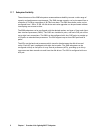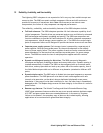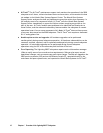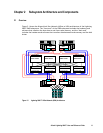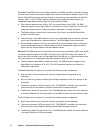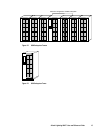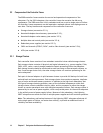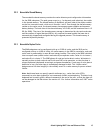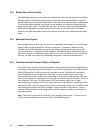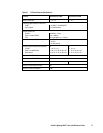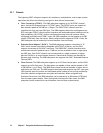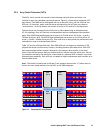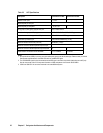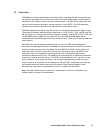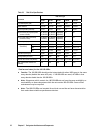Hitachi Lightning 9900™ User and Reference Guide 15
2.2.2 Nonvolatile Shared Memory
The nonvolatile shared memory contains the cache directory and configuration information
for the 9900 subsystem. The path group arrays (e.g., for dynamic path selection) also reside
in the shared memory. The shared memory is duplexed, and each side of the duplex resides
on the first two cache cards, which are in clusters 1 and 2. Even though the shared memory
resides on the cache cards, the shared memory has separate power supplies and separate
battery backup. The basic size of the shared memory is 512 MB, and the maximum size is 1.5
GB (for 9960). The size of the shared memory storage is determined by the total cache size
and the number of logical devices (LDEVs). Any required increase beyond the base size is
automatically shipped and configured during the upgrade process. The shared memory is
protected by battery backup.
2.2.3 Nonvolatile Duplex Cache
The 9960 subsystem can be configured with up to 32 GB of cache, and the 9910 can be
configured with up to 16 GB of cache. All cache memory in the 9900 is nonvolatile, and each
cache card is protected by its own 48-hour battery backup. The cache in the 9900 is divided
into two equal areas (called cache A and cache B) on separate cards. Cache A is in cluster 1,
and cache B is in cluster 2. The 9900 places all read and write data in cache. Write data is
normally written to both cache A and B with one CHIP write operation, so that the data is
always duplicated (duplexed) across logic and power boundaries. If one copy of write data is
defective or lost, the other copy is immediately destaged to disk. This “duplex cache”
design ensures full data integrity in the unlikely event of a cache memory or power-related
failure.
Note: Mainframe hosts can specify special attributes (e.g., cache fast write (CFW)
command) to write data (typically a sort command) without write duplexing. This data is not
duplexed and is usually given a discard command at the end of the sort, so that the data will
not be destaged to the disk drives. See section 4.3.3 for further information on S/390
®
cache
operations.




